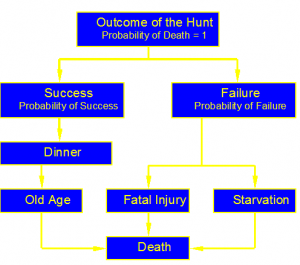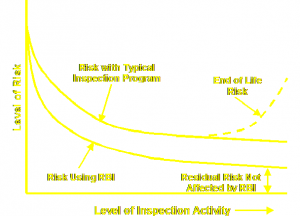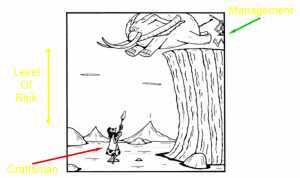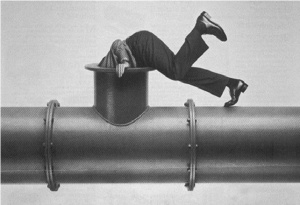RBI Risk Based Inspection
Chapter 3
Basic Concepts
What is Risk?
- Risk is something that we live with on a day-to-day basis
- What is a Risk Decision?
- Examples from every day life
An Example of a Risky Decision
Acceptance of Risk
- We accept risk because the probability of a serious catastrophe is sufficiently low to make it acceptable
Risk
- Risk is the combination of the probability of an event occurring during some time period and the consequence (generally negative) associated with the event
Risk = Probability x Consequence
Perception of Risk Versus Reality
Management Perception
Engineers
Supervisors
Operators
Craftsman Reality
A Perception of a Risky Decision
 Risk Management and Risk Reduction
Risk Management and Risk Reduction
- Not really synonymous
- Risk reduction is a part of risk management
- Act of mitigating a known risk to a lower level
- Risk Management is a process
- To assess risk
- To determine if risk reduction is required
- To develop a plan to maintain risks at an acceptable level
- Some risks may be identified as acceptable
- Some risks may be inherent
Management of Risk Using RBI
 Evolution of Inspection Intervals
Evolution of Inspection Intervals
- Inspection programs are established to detect and evaluate deterioration due to in-service operations
- Periodic verification of equipment integrity evolved as “calendar-based” intervals
- Effectiveness varied widely
Evolution of Inspection Approach
- Better understanding of type and rate of deterioration
- Intervals became more dependent on equipment condition
- Codes and standards evolved
- Percentage of equipment life interval
- On-stream in lieu of internal inspection
- Process environment induced cracking
- Consequence based inspection intervals
Traditional Equipment Inspection
- Ultimate Goal of Inspection
- Safety and Reliability of Operating Facilities
- RBI Approach
- Focuses attention specifically on equipment and associated deterioration mechanisms representing the most risk to the facility
Inspection Optimization
- Optimization for planning and implementing a risk based inspection program needs information on:
- Risk associated with equipment
- Relative effectiveness of inspection techniques to reduce risk
- Not all inspection programs are equally effective in detecting in-service deterioration and reducing risks
- Various inspection techniques are usually available to detect any given deterioration mechanism
- Each method will have a different effectiveness.
Relative Risk vs. Absolute Risk
- Complexity of risk calculation is function of factors affecting risk
- Absolute risk is virtually impossible to determine because of too many uncertainties
- RBI is focused on a systematic determination of relative risk
- Risk acceptance may be evaluated by sensitivity analysis



Leave a Reply